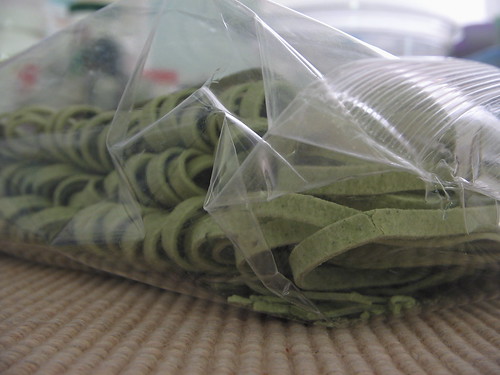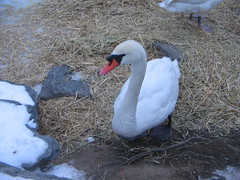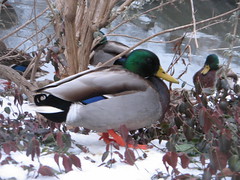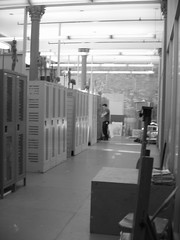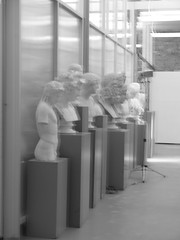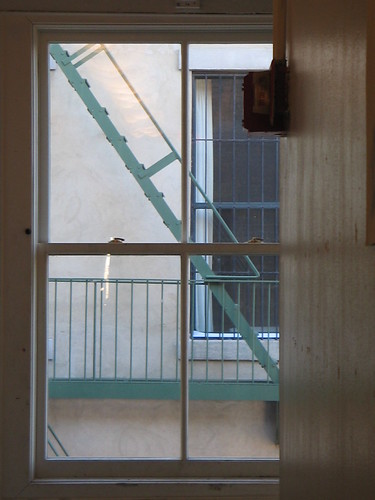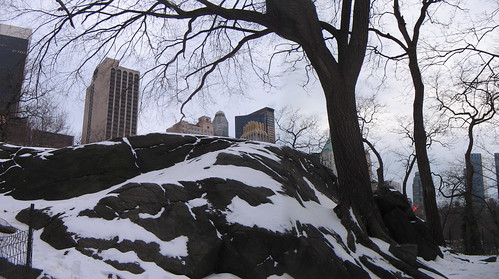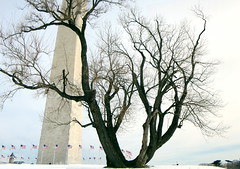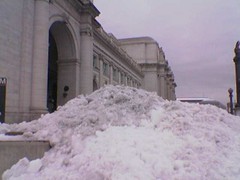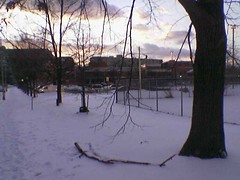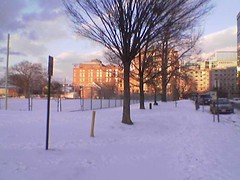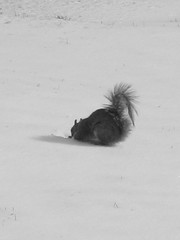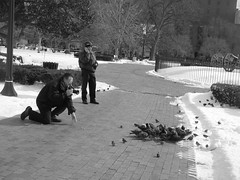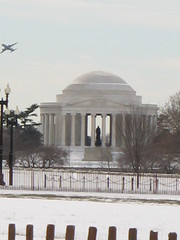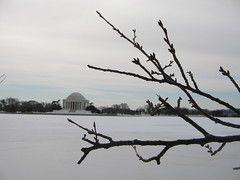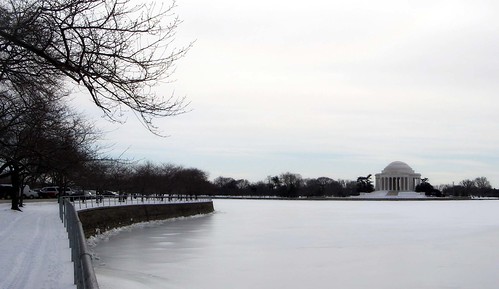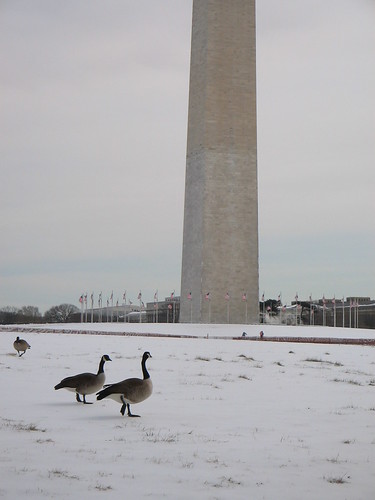Conventional supermarket pasta comes in long rods of hardened wheat which necessitate a stressful and messy break-in-half procedure before they will fit in my 4-quart pot of boiling water. Not so with these packs of Trader Joe’s linguine; they are gently prefolded before drying so that they can be dropped straight into the pot with minimal fuss. Thank you, TJ’s.
Phish Snooping for Beginners
So I get a phishing message telling me “Your Bank of America account has been closed, click here to reactivate it.” Nothing new. I don’t even have a BoA account, and even if I did, I know enough to avoid phishes. But before clicking on the “Report phishing” link, I try a click on the target domain: timeunolefale.net. That domain does a 302 redirect to timeforboaaccs.us. That domain shows a standard phishing form asking for the usual name, SSN, credit card number, etc.
I wonder if the original domain has been 302 hijacked, and where both sites are hosted. At the time of this writing the domains seem to be freshly registered, so whois info hasn’t propagated enough to return me any useful results, but tracert with the domain (used from the command line) returns a host in the 68.142.212.* range — also known as p10w7.geo.mud.yahoo.com, which means the phisher is using Yahoo Webhosting. Their phishing report form is here. Other web hosts will have other ways to take action, usually an abuse report form or email address.
As for the phish email itself, headers show it comes from 172.174.228.95 — AOL (Yeah, that’s right. An AOL user using Yahoo Webhosting. Classy. Or it might be an AOL user whose PC was hijacked by a trojan, the more likely scenario.), which has a phishing security section, but when you try clicking on Online Help to look for a phishing report contact, it asks you to log in to AOL. Screw that.
So there’s a sample of what you can do to sniff out phishers, and hopefully do a little bit more to stop them beyond your web mail app’s “Report Phishing” function: tracert the domain, get whois info, find out where it’s hosted, check the headers for the email’s origin, and report the phish to the internet service providers involved.
Next time: using PHP and Tor to crapflood phishers’ forms with fake data.
Update: Well, both sites are gone. Pretty fast action.
Ducks and Swans on Ice
Ducks and swans hanging around on the ice in the Pond, Central Park. Most of the ducks were sleeping with a leg up, puffed to insulate against cold, while the swans munched on hay off to one side. As we watched them, Amy mentioned this reference from Catcher in the Rye:
I live in New York, and I was thinking about the lagoon in Central Park, down near Central Park South. I was wondering if it would be frozen over when I got home, and if it was, where did the ducks go? I was wondering where the ducks went when the lagoon got all icy and frozen over. I wondered if some guy came in a truck and took them away to a zoo or something. Or if they just flew away.
I guess this answers Holden’s question.
Within NYAA
These are from various locations within the New York Academy of Art, where Amy got her Master’s Degree in painting. The middle floors of the old building are open and partitioned into studio spaces, many with windows that look out onto alleyways and fire escapes, creating a quintessentially “Tribecan” ambience. Student and faculty work can be seen all over the studio areas, much of it quite impressive, and a row of copies of famous busts line one wall on the second floor, seeming to watch as you pass by them.
Stroller Wheel
Long Weekend in NJ/NYC
Amy and I spent the long weekend up in New Jersey, with a trip to NYC on Saturday to sell a drawing and view the art of Odd Nerdrum at Forum Gallery. We also checked out the Apple Cube, and dropped by the frozen Pond in Central Park to check on the wintering-over ducks (for Holden Caulfield’s sake). Lunch was burgers at White Castle and dinner was soup and salad at Pax. Some photos from the day follow, with more photos here.
White Castle
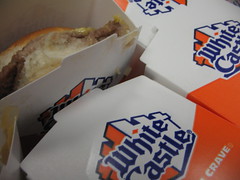 I had my first White Castle meal last Saturday, at the joint on 8th Ave in New York, between Port Authority and Penn Station. My train of thought upon entering the restaurant: “Wow, these burgers are cheap! Waaaay cheap! Hey, why are we ordering ten…”
I had my first White Castle meal last Saturday, at the joint on 8th Ave in New York, between Port Authority and Penn Station. My train of thought upon entering the restaurant: “Wow, these burgers are cheap! Waaaay cheap! Hey, why are we ordering ten…”
So it turns out White Castle burgers are pretty small, with beef patties about the size and thickness of slices of spam, so it’s customary to order several for one meal. Amy and I got a meal of ten cheeseburgers for both of us, though it turns out that two or three burgers each is probably enough when eaten with fries and sodas. Delicious, though, and one could feel the historic and gastronomic weight of this fine establishment in every bite.
(It must be pointed out, however, that there was some confusion as to what exactly “White Castle” was when I first came to the USA, since in the Philippines there is a brand of whiskey going by the same name, notorious for its TV advertisements featuring a maiden clad in a skimpy red swimsuit, riding a white horse down a beach to deliver strong alcoholic libations to sweaty, shirtless, muscular Filipino alpha males. Someone find me a web video of those ads, please. For the lulz.)
Washington Monument Tree
 Over on DC Metroblogging, I have a few questions about the Washington Monument Tree. The photo I’m showing off in that entry is actually a stitched panorama of three vertical photos side by side. Funny thing is, I didn’t realize until after I had uploaded it that I had taken a somewhat similar panorama of the Washington Monument Tree just over a year ago, on a similarly snowy day.
Over on DC Metroblogging, I have a few questions about the Washington Monument Tree. The photo I’m showing off in that entry is actually a stitched panorama of three vertical photos side by side. Funny thing is, I didn’t realize until after I had uploaded it that I had taken a somewhat similar panorama of the Washington Monument Tree just over a year ago, on a similarly snowy day.
Anyway, anyone who might have inside knowledge of the history of that particular tree, you’re quite welcome to add that knowledge to ours over here.
Aftermath of the Valentine’s Day 2007 Winter Storm
The Valentine’s Day winter storm of 2007 was mostly sleet and frozen rain here in DC: ice pellets rather than flakes, and all through the night I heard the high-pitched tinkling of crystals striking my windows. What settled on the streets and sidewalks seemed like snow at first glance, but it slumped where it rested, with a grainy consistency more like iodized salt than fluffy snow.
Walking on it was like walking on freezer frost, and after a day of thawing and a cold night of refreezing, the icy crust turned hard enough that you could walk on — and slide across — it without the ice breaking beneath your feet. Where it had not formed a crust, it instead formed muddy pools of slush, and on untreated and unshoveled streets and sidewalks it would be packed by throngs of feet and wheels into a rough, shiny, slippery sheen. Since the storm, one must be very careful walking about the city.
I traipsed around the monuments a bit today, to see how the popular public spaces of DC fare in the aftermath of an ice storm. Lafayette Park, in front of the White House, was clean and well-plowed, heavy with tourists and photographers as always, though all were presently chased off by Secret Service for a VIP to pass through, probably the president. The squirrel digging in the ice, however, was allowed to stay.
Large sections of the paths up to the Washington Monument, as well as the granite plaza encircling the obelisk, were covered with a dangerous layer of slippery refrozen ice. Atop the Monument hill a lovely wind was blowing, so strong I had to brace against it lest my jacket turn into a sail and send me skidding, iceboat-like, across the plaza. Against the monument wall a security guard stood, hooded and bundled, facing towards the Lincoln Memorial.
It was a bit of a slippery walk down to the Tidal Basin, which had frozen over almost completely. I didn’t bother walking all the way around to the Jefferson Memorial, as my feet had begun to ache from the stress of walking on winter ice; but I stood there for a few minutes, watching the ice slowly shift and and climb and crack along the walls of the Tidal Basin as the murky water water beneath it froze and expanded. Around me were the famous cherry trees, bare of leaf or flower. Hard to believe that in two months they will be bright with cherry blossoms.
Walking back to the Metro to get to work, I saw geese.
Yahoo Pipes
Yahoo Pipes is a potentially interesting concept: a metadata mixer which you program via a drag-and-drop “flowchart” GUI, with little pipes to connect the boxes. Now, I say “potentially” because the concept is great, but the execution is still a bit buggy, especially where Flickr-based content and Content Analysis operators are concerned. Pipes are slow, and seem to fail quite frequently, and when they do work, image results are aggressively cached so you get the same stream of photos even days later. Output is shown as a conventional formatted text or graphic feed, without any venue to customize the stream with a template or CSS — which is a pity, since styling the output is half the fun of remixing the content. (Hence the perennial “Beta,” I suppose.)
Here are my first attempts at Pipes. Mostly it’s just Metafilter feed consolidation, and clones of other Pipes which run feeds through Content Analysis and replace the keywords with Flickr content.
